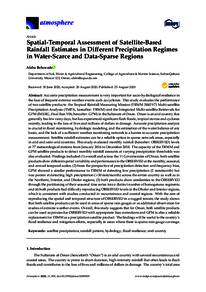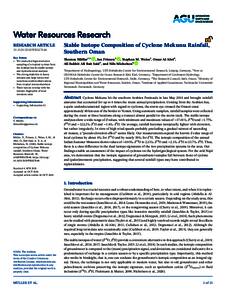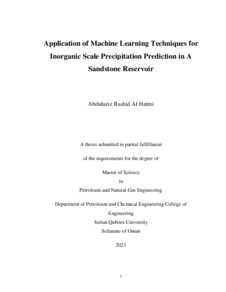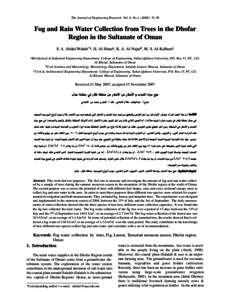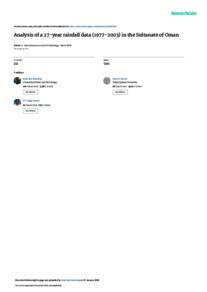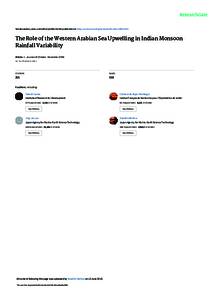Document
Spatial-temporal assessment of satellite-based rainfall estimates in different precipitation regimes in water-scarce and data-sparse regions.
Identifier
DOI: 10.3390/ATMOS11090901
Source
Atmosphere. v. 11, 9, 901
Country
Switzerland.
Publisher
MDPI AG.
Gregorian
2020-09-01
Language
English
English abstract
Accurate precipitation measurement is very important for socio-hydrological resilience in the face of frequent extreme weather events such as cyclones. This study evaluates the performance of two satellite products: the Tropical Rainfall Measuring Mission (TRMM 3B43V7) Multi-satellite Precipitation Analysis (TMPA, hereafter: TRMM) and the Integrated Multi-satellite Retrievals for GPM (IMERG, Final Run V06, hereafter: GPM) in the Sultanate of Oman. Oman is an arid country that generally has few rainy days, but has experienced significant flash floods, tropical storms and cyclones recently, leading to the loss of lives and millions of dollars in damage. Accurate precipitation analysis is crucial in flood monitoring, hydrologic modeling, and the estimation of the water balance of any basin, and the lack of a sufficient weather monitoring network is a barrier to accurate precipitation measurement. Satellite rainfall estimates can be a reliable option in sparse network areas, especially in arid and semi-arid countries. This study evaluated monthly rainfall (hereafter: OBSERVED) levels at 77 meteorological stations from January 2016 to December 2018. The capacity of the TRMM and GPM satellite products to detect monthly rainfall amounts at varying precipitation thresholds was also evaluated. Findings included (1) overall and across the 11 Governorates of Oman, both satellite products show different spatial variability and performance to the OBSERVED at the monthly, seasonal, and annual temporal scales; (2) from the perspective of precipitation detection and frequency bias, GPM showed a similar performance to TRMM at detecting low precipitation (2 mm/month) but was poorer at detecting high precipitation (>30 mm/month) across the entire country as well as in the Northern, Interior, and Dhofar regions; (3) both products show similarities to the OBSERVED through the partitioning of their seasonal time series into a distinct number of homogenous segments; and (4) both products had difficulty reproducing OBSERVED levels in the Dhofar and Interior regions, which is consistent with studies conducted in mountainous and coastal regions. With the aim of reproducing the spatial and temporal structure of OBSERVED in a rugged terrain, the study shows that both satellite products can be used in areas of sparse rain gauges or as additional observation for studies of extreme weather events. Overall, this study suggests that for Oman, both satellite products can be used as proxies for OBSERVED with appropriate bias corrections and GPM is also a reliable replacement for TRMM as a precipitation satellite product. The findings will be useful to the country's flood resilience and mitigation efforts, especially in areas where there is sparse rain gauge coverage.
ISSN
2073-4433
Resource URL
Category
Journal articles

